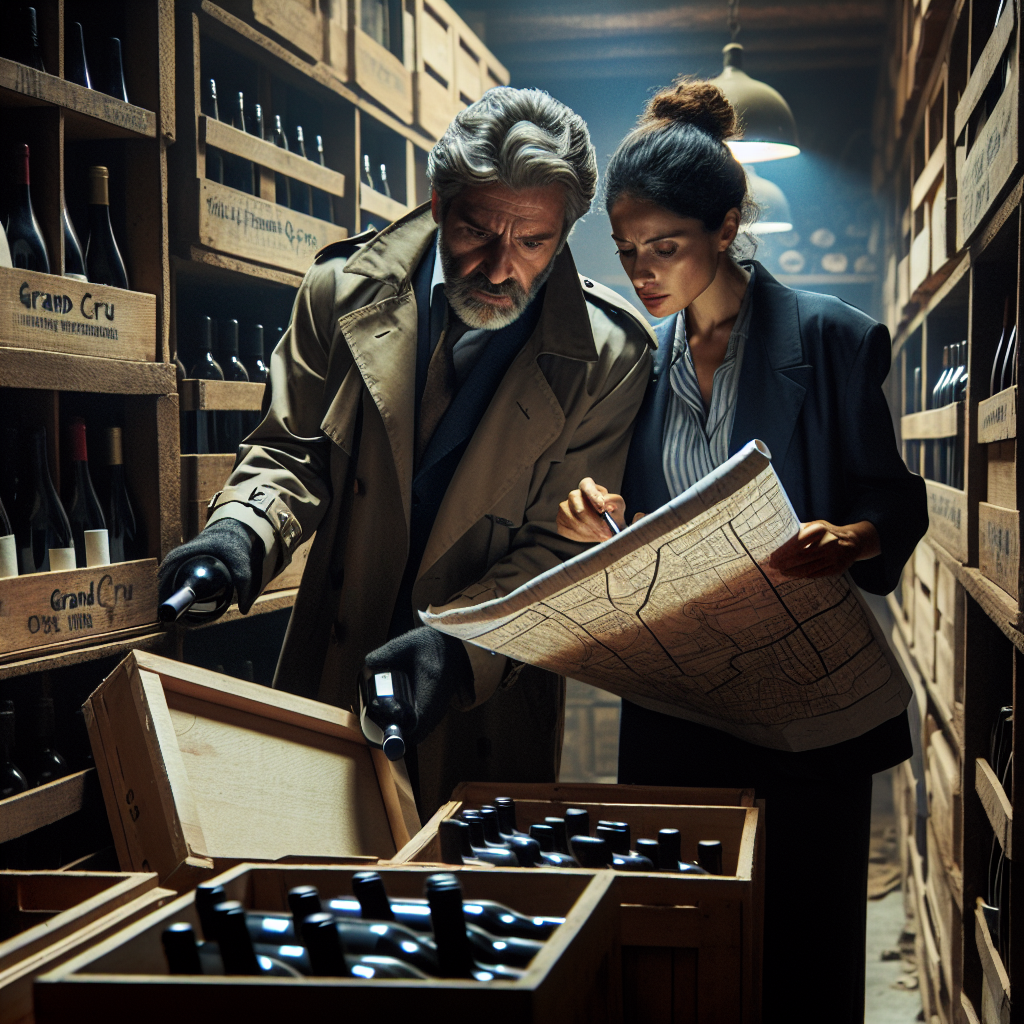Burgundy’s Grand Cru Wine Heist: A Deep Dive into the World of Fine Wine Theft

The world of fine wine is often associated with luxury, sophistication, and exclusivity. However, it also has a darker side, as evidenced by the infamous Burgundy Grand Cru Wine Heist. This audacious crime has captivated wine enthusiasts and security experts alike, shedding light on the vulnerabilities within the high-stakes world of premium wine. In this article, we will explore the details of the heist, its impact on the wine industry, and the measures being taken to prevent such incidents in the future.
The Heist: A Bold and Calculated Operation
The Burgundy Grand Cru Wine Heist took place in the heart of France’s Burgundy region, renowned for producing some of the world’s most exquisite wines. The heist involved the theft of several cases of Grand Cru wine, valued at hundreds of thousands of dollars. The thieves targeted a well-known vineyard, breaking into its cellar and making off with a carefully selected assortment of rare and valuable bottles.
What made this heist particularly shocking was the level of sophistication and planning involved. The thieves bypassed advanced security systems, indicating a deep understanding of the vineyard’s layout and security measures. This level of expertise suggests that the perpetrators were not ordinary criminals but rather individuals with a specific knowledge of the wine industry.
Impact on the Wine Industry
The Burgundy Grand Cru Wine Heist sent shockwaves through the wine industry, highlighting the vulnerabilities that exist even in the most secure environments. The theft not only resulted in significant financial losses for the vineyard but also raised concerns about the safety and security of other high-value wine collections around the world.
Several key impacts of the heist include:
- Financial Losses: The stolen wine represented a substantial financial investment, with some bottles valued at tens of thousands of dollars each.
- Reputation Damage: The vineyard’s reputation took a hit, as customers and collectors questioned the security of their investments.
- Increased Security Measures: Wineries and collectors have since implemented more stringent security protocols to protect their valuable assets.
Preventing Future Heists: Lessons Learned
In the wake of the Burgundy Grand Cru Wine Heist, the wine industry has taken several steps to enhance security and prevent similar incidents from occurring in the future. Some of the measures being implemented include:
- Advanced Surveillance Systems: Wineries are investing in state-of-the-art surveillance technology, including high-definition cameras and motion sensors, to monitor their premises more effectively.
- Enhanced Access Controls: Access to wine cellars and storage areas is being restricted to authorized personnel only, with biometric authentication and keycard systems becoming more common.
- Inventory Tracking: Advanced inventory tracking systems, such as RFID tags and blockchain technology, are being used to monitor the movement and location of valuable wine bottles.
- Collaboration with Law Enforcement: Wineries are working closely with law enforcement agencies to develop strategies for preventing and responding to wine thefts.
Case Study: SnapWine’s Innovative Approach
One notable example of a company taking proactive measures to combat wine theft is SnapWine. By leveraging cutting-edge technology and innovative security solutions, SnapWine has set a new standard for protecting valuable wine collections. Their approach includes:
- Smart Cellar Technology: SnapWine’s smart cellar systems integrate advanced sensors and real-time monitoring to detect any unauthorized access or environmental changes that could compromise the integrity of the wine.
- Blockchain Authentication: By using blockchain technology, SnapWine ensures that each bottle’s provenance and ownership history are securely recorded and easily verifiable.
- Community Engagement: SnapWine fosters a community of wine enthusiasts and collectors who share information and collaborate on best practices for wine security.
Conclusion: Safeguarding the Future of Fine Wine
The Burgundy Grand Cru Wine Heist serves as a stark reminder of the vulnerabilities that exist within the world of fine wine. However, it has also spurred the industry to adopt more robust security measures and innovative technologies to protect their valuable assets. Companies like SnapWine are leading the charge, demonstrating that with the right approach, it is possible to safeguard the future of fine wine.
As the wine industry continues to evolve, it is crucial for vineyards, collectors, and security experts to remain vigilant and proactive in their efforts to prevent theft and ensure the integrity of their collections. By learning from past incidents and embracing new technologies, the world of fine wine can continue to thrive and maintain its reputation for excellence and exclusivity.





